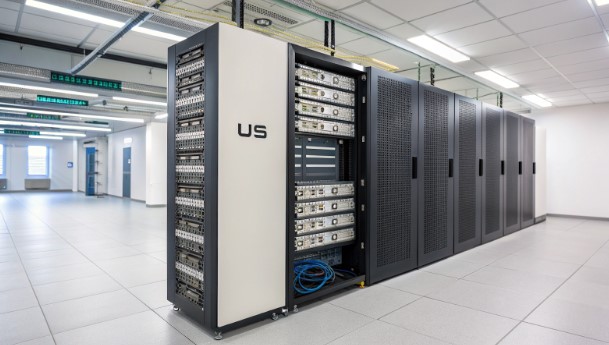The Rise of American Servers and the Challenges They Face

The landscape of global server infrastructure has undergone a revolutionary transformation over the past decade, with US hosting providers emerging as dominant forces in the industry. This technological evolution has fundamentally reshaped how businesses approach data management, cloud computing solutions, and digital infrastructure deployment worldwide. From Silicon Valley to the East Coast’s bustling data corridors, American server technology continues to set global standards.
The Evolution of US Server Infrastructure
Since the inception of the commercial internet, US data centers have consistently pushed technological boundaries through relentless innovation. The infrastructure backbone, stretching from Silicon Valley’s tech hub to Virginia’s Data Center Alley, now processes an astounding 70% of global internet traffic. This dominance stems from strategic geographical positioning, advanced fiber optic networks, and continuous innovation in critical systems.
Modern US data centers employ sophisticated cooling architectures, including advanced liquid cooling systems, precision air handling units (CRAH/CRAC), and AI-driven thermal management. These facilities maintain optimal operating temperatures while reducing energy consumption through innovative heat exchange methods and smart sensor networks. The implementation of modular design principles allows for rapid scaling and efficient resource allocation.
Technical Advantages of US Hosting Solutions
US hosting providers leverage cutting-edge technologies that consistently set industry standards. Their implementation of advanced routing algorithms, coupled with redundant power systems (N+1 configuration), delivers an impressive 99.999% uptime. The widespread adoption of NVMe storage and 400G networking capabilities has further cemented their technological edge in the global market.
The integration of artificial intelligence for predictive maintenance and automated resource optimization has revolutionized server management. Machine learning algorithms analyze vast amounts of operational data to predict potential hardware failures, optimize workload distribution, and maintain peak performance levels. This proactive approach to infrastructure management significantly reduces downtime and operating costs.
Market Dynamics and Competition
Recent market analysis reveals US providers control approximately 45% of the global hosting market, with annual growth rates exceeding 15%. The integration of edge computing capabilities and the proliferation of CDN nodes have expanded their reach across continents. However, emerging players from Asia-Pacific regions are introducing competitive pricing models and innovative solutions, particularly in markets like Singapore, Japan, and South Korea.
The competitive landscape is further shaped by the increasing demand for specialized hosting solutions. Financial services require ultra-low latency connections, healthcare providers need HIPAA-compliant infrastructure, and gaming companies demand high-bandwidth, low-latency networks. US providers have responded by developing industry-specific hosting solutions that address these unique requirements.
Security Challenges in Modern Hosting
Cybersecurity threats have evolved into sophisticated, multi-vector attacks requiring equally advanced defense mechanisms. US providers are implementing zero-trust architectures and quantum-resistant encryption protocols to protect against emerging threats. State-of-the-art DDoS mitigation systems now handle attacks exceeding 2Tbps, while AI-powered intrusion detection systems process millions of potential threats daily.
Physical security measures have also evolved significantly. Modern data centers employ multi-factor biometric authentication, mantrap systems, and 24/7 security operations centers (SOCs). Advanced video analytics and IoT sensors create a comprehensive security mesh that monitors and responds to potential threats in real-time.
Sustainability and Energy Efficiency
Power Usage Effectiveness (PUE) metrics have become crucial benchmarks in the industry. Leading US facilities maintain impressive PUE ratings below 1.2, achieved through innovative cooling techniques like liquid immersion and AI-controlled HVAC systems. Renewable energy adoption has reached 80% in major data centers, with many facilities implementing on-site solar arrays and wind turbines.
Water usage efficiency (WUE) has emerged as another critical metric. Advanced water reclamation systems and dry cooling technologies have significantly reduced water consumption. Some facilities have achieved near-zero water usage through closed-loop cooling systems and atmospheric water generation technology.
Future Technological Roadmap
The next wave of innovation focuses on quantum computing integration and molecular storage solutions. US providers are investing heavily in photonic computing infrastructure and developing carbon-neutral data centers. These advancements aim to address the increasing demands of AI workloads and edge computing applications.
Research into novel cooling technologies continues, with promising developments in two-phase immersion cooling and graphene-based heat dissipation systems. The integration of automation and robotics for hardware maintenance and replacement is also gaining traction, reducing human intervention requirements and improving operational efficiency.
Regulatory Landscape and Compliance
Complex data sovereignty requirements and privacy regulations like GDPR and CCPA have necessitated sophisticated compliance frameworks. US hosting providers have implemented automated compliance monitoring systems and granular data residency controls. These systems provide real-time compliance tracking and automated documentation generation for auditing purposes.
Cross-border data transfer mechanisms have become increasingly complex, requiring providers to implement sophisticated data routing and storage solutions. Advanced encryption and tokenization technologies ensure data privacy while maintaining compliance with various regional regulations.
Strategic Recommendations for Growth
Success in the evolving hosting landscape requires focus on key areas:
– Implementation of quantum-safe cryptography protocols
– Development of AI-powered resource optimization systems
– Expansion of edge computing capabilities and micro data centers
– Investment in green energy infrastructure and carbon neutrality
– Enhancement of cross-border data handling mechanisms
– Integration of automated compliance monitoring tools
– Development of industry-specific hosting solutions
– Implementation of advanced security frameworks
The future of US hosting and colocation services lies in balancing technological innovation with sustainability and security demands. As global competition intensifies and technology evolves, providers must continue advancing their infrastructure while maintaining their competitive edge in international markets through strategic investments and continuous innovation.

